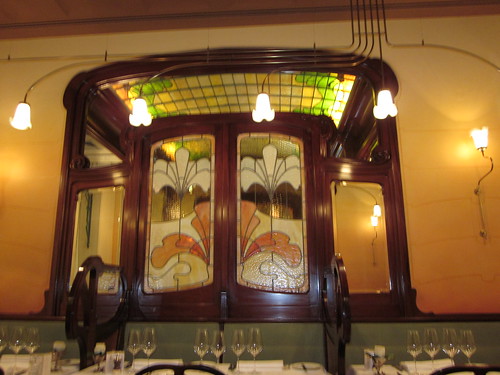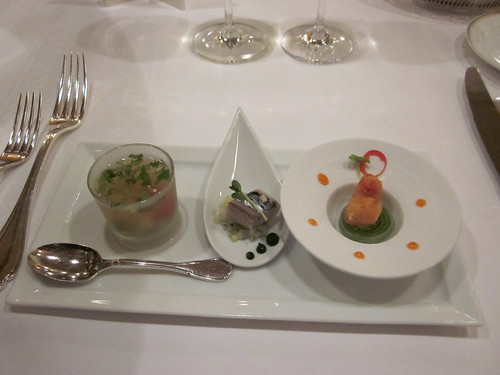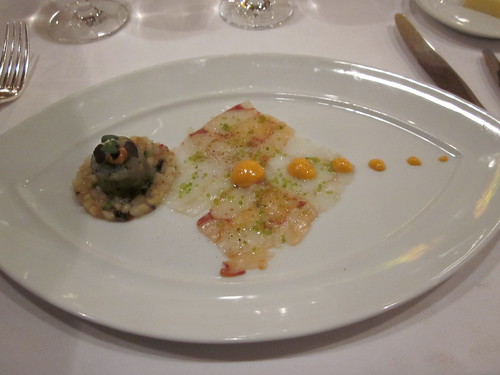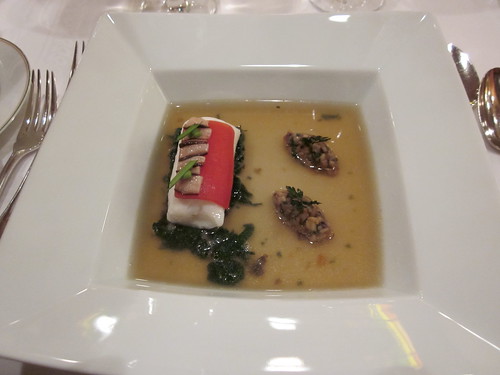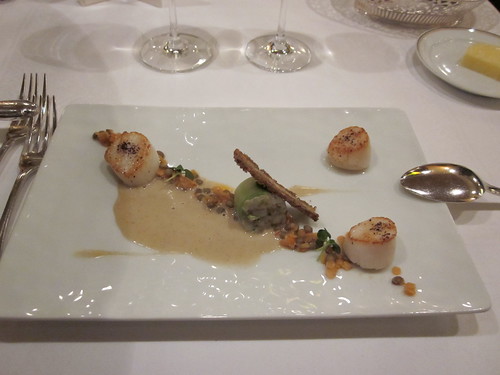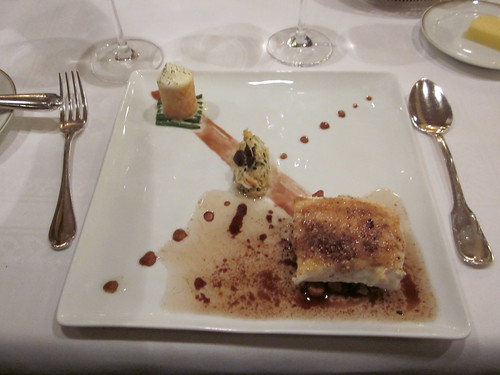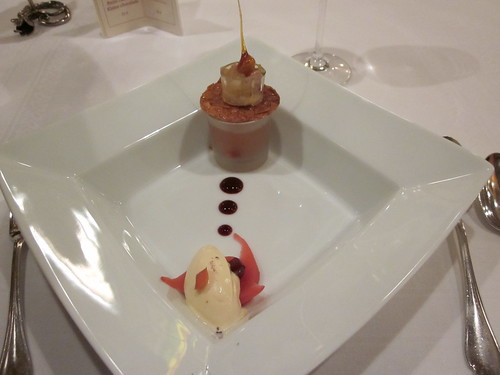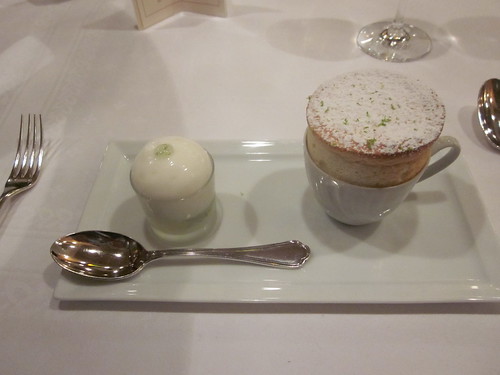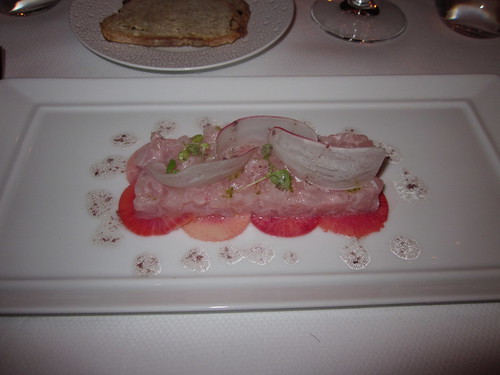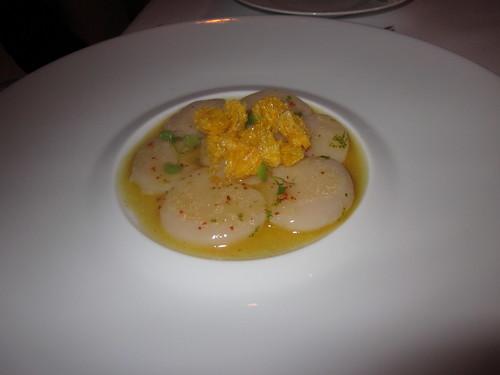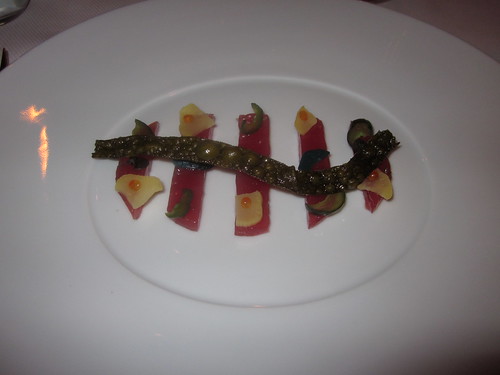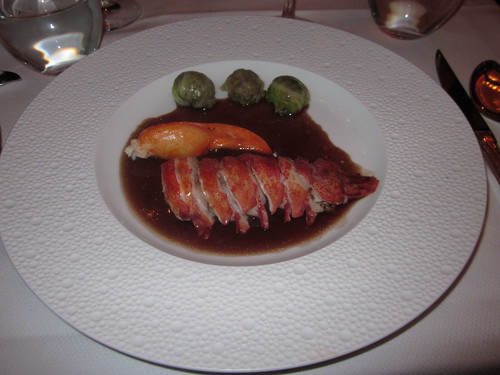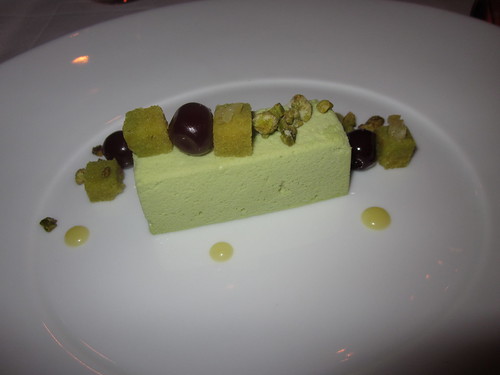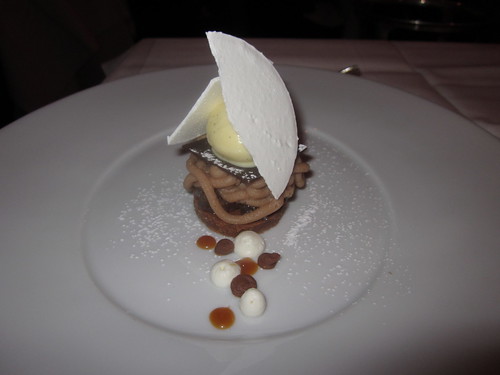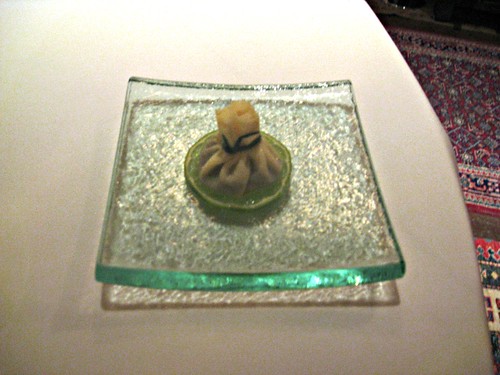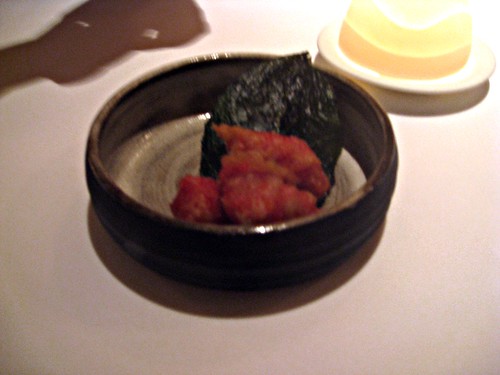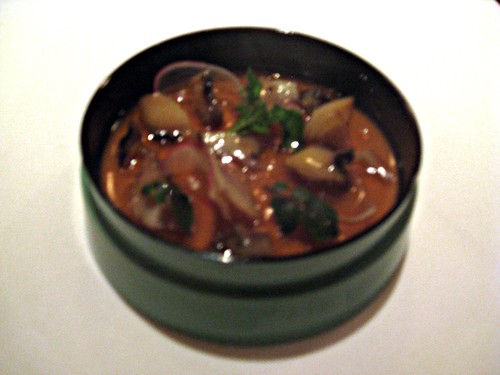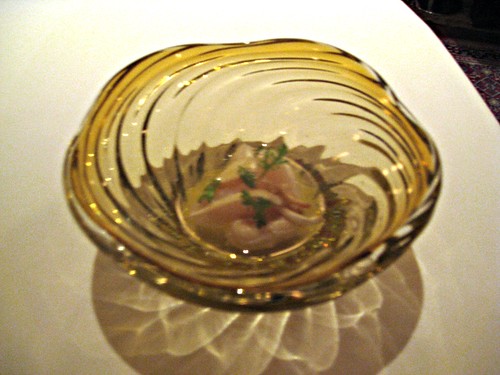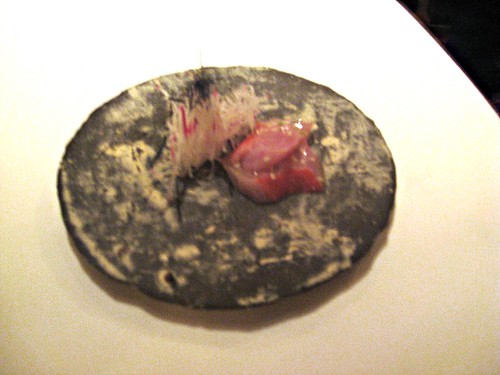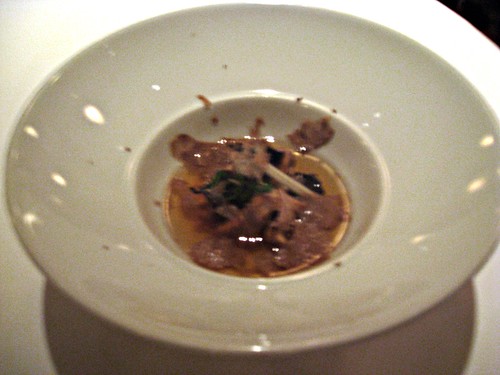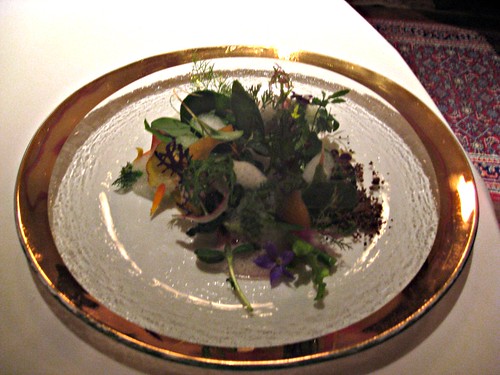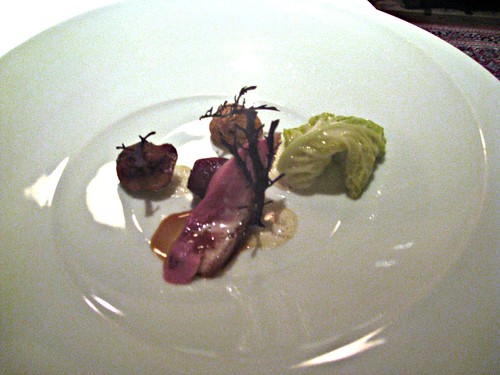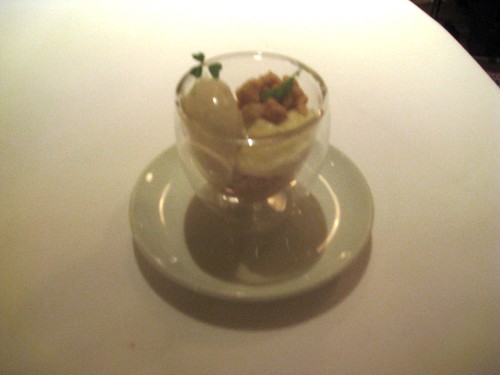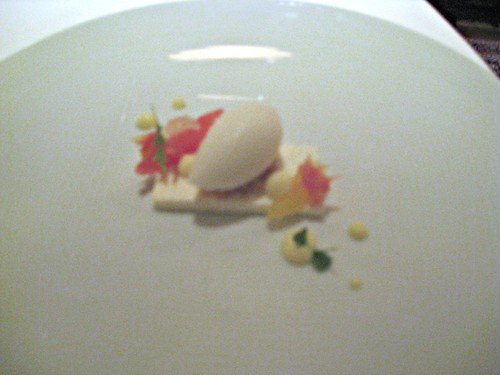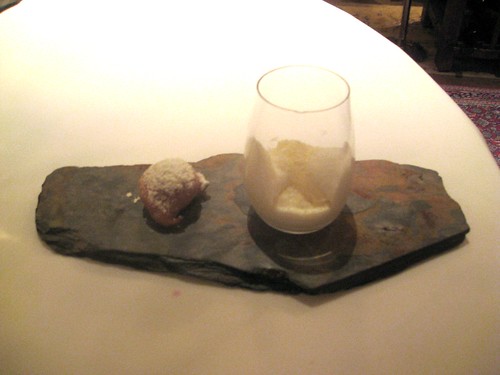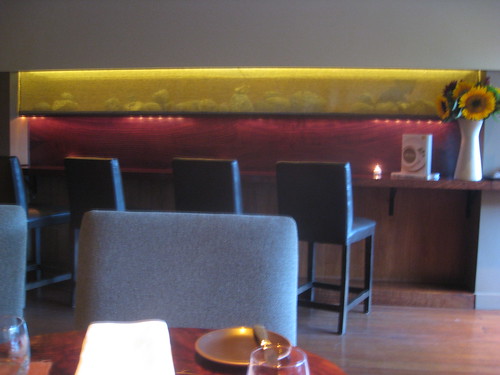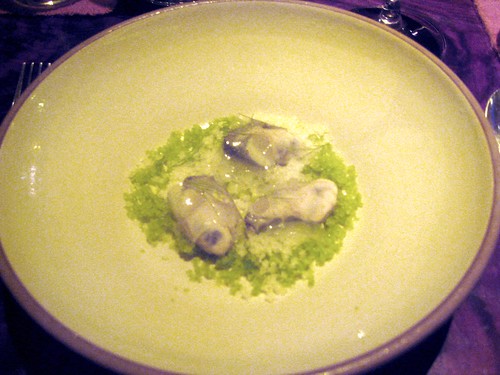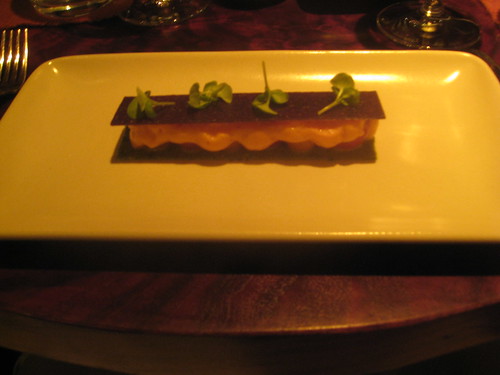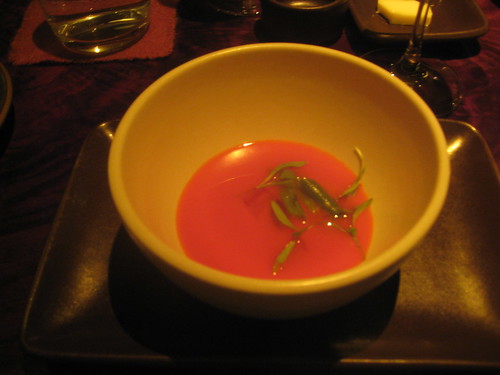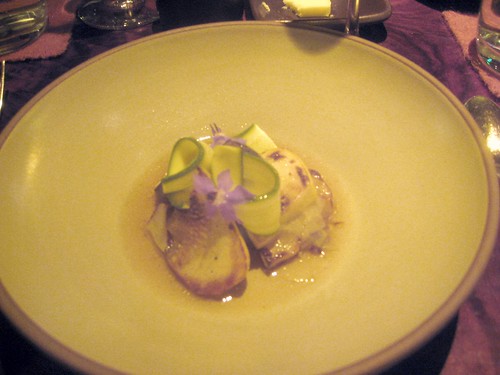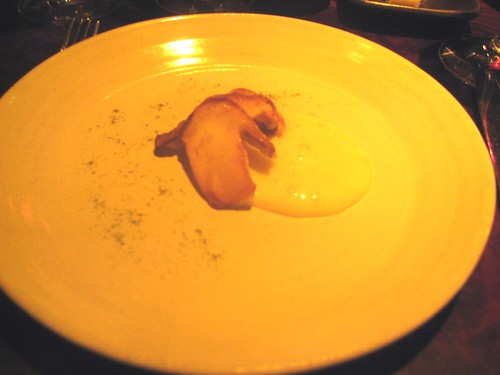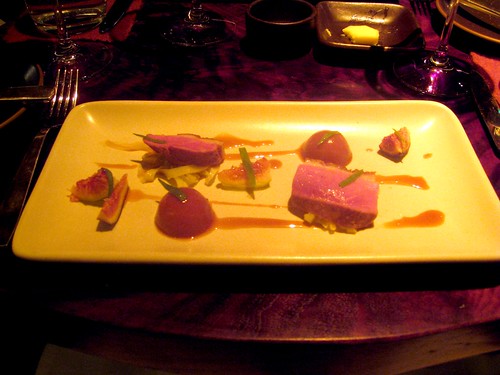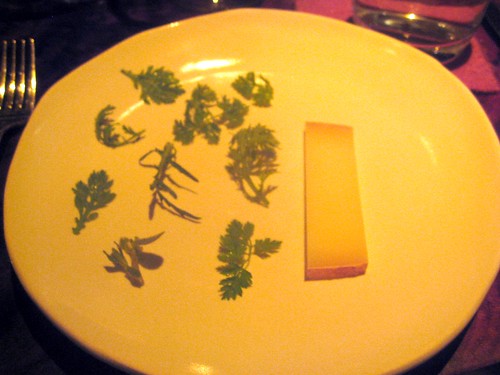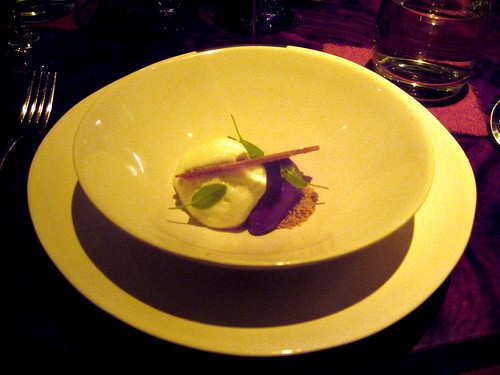Perhaps we should blame the housing bubble, perhaps the remaining high rents in the beau monde, or perhaps the lack of commitment of a generation of slackers. Whatever the cause, a hot trend in contemporary dining is the restaurant that is not, truly, a restaurant: a restaurant of the eye blink. A restaurant that is less a piece of real estate than a place of mind. Sometimes this alternative style is known as underground dining, which has the allure of a dining party consisting of people that you never wish to meet again. These gatherings are frequently one-offs, sometimes held in an apartment or an industrial venue, although some establish weekly or monthly schedules. One senses something of Tom Wolfe’s nostalgie de la boue – a loving admiration for dirt and depravity – that makes these occasional festivities fascinating, but with health departments not invited.
However, even in occasional dining there are status distinctions. Some prominent chefs are satisfied to cook for awhile, and then go fallow, only to sprout again. In my hometown of Chicago the best known example was Patrick Chabert’s occasional meals at Berutti’s in Buffalo Grove. Chabert was for many years sous chef at Le Francais, and some of that glory sticks to him still.
At present the star of the pop-up is surely Los Angeles’s admired chef and food trucker extraordinaire (Keep on Truckin’) Ludo Lefebvre, a chef with all the proper Parisian credentials (L’Arpege and Gagnaire) and with a stint of fine restaurant chefing under his toque at Bastide and l’Orangerie. Chef Ludo has received honors of various weight, including warmly admiring media attention.

Today Chef Ludo fashions himself as an occasional chef. Yes, he has a food truck, purveying what I am led to believe is sturdy fried chicken, found on the streets of Los Angeles if one is on his Tweet-list, but he has no permanent restaurant home. What he has, in contrast, are pop-up sites. He will rent a restaurant space and then will devise a fairly set menu for some six weeks. In our digital age, these spottings are labeled 1.0, 2.0, until the current iteration, Ludobites 6.0, open (and now closed) at Max’s, a modest but pleasant restaurant space in Sherman Oaks, located in “The (San Fernando) Valley,” along Ventura Boulevard.
From a friend who has eaten at five of these pops, I understand that Chef Ludo’s style changes with the iteration, creating disparate culinary selves. Sometimes his menu owes much to classical traditions, other times he is modernist, and on still other occasions there is a pronounced Asian inflection. Some meals are more precise and restrained, and others are profoundly energetic. Ludobites 6.0 is more ebullient than carefully composed.
This meal was characterized by robust flavors, but for the most part not a large dollop of precise technique appearing on the plate. I was told that the 6.0 cuisine was at some distance from chef Ludo’s cuisine at Bastide: not that one would wish to have a chef’s creations frozen in amber or molasses: no semifreddo he.
The first marquee dish - Escargot, Brussel Sprouts, Red Mole, Corn Ice Cream, and Tofu Squares – provoked a dollop of dispute. More than my tablemates, I found the dish excellent and after some weeks I recall it well. Chef Lefebvre did not prepare an authentic, classic mole, and so perhaps the false advertising burned some tongues: the sauce had very strong allspice tones, but I found the combination of allspice and snails and corn ice cream alluring and seductive. The dish was not designed for quiet contemplation. It was a excitable plate, to be avoided by the squeamish. Perhaps it wasn’t beautiful resting on china, but in this it set the tone for the meal.
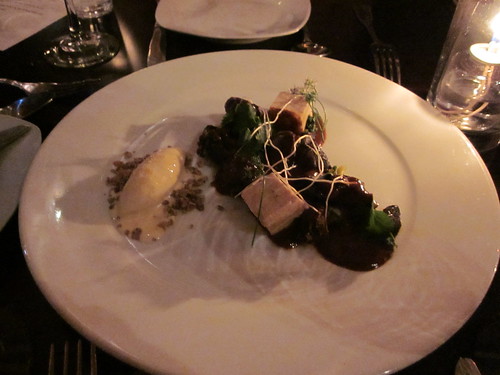
Hamachi Vietnamese Style appeared as a wild salad, and so a theme emerged. Some fine slabs of Hamachi were showered with Vietnamese inspired ingredients, ginger and sprouts throughout: it was not a classic composition, but a tasty mound of vegetables. Without much of a culinary logic, it did not leave a large impression.
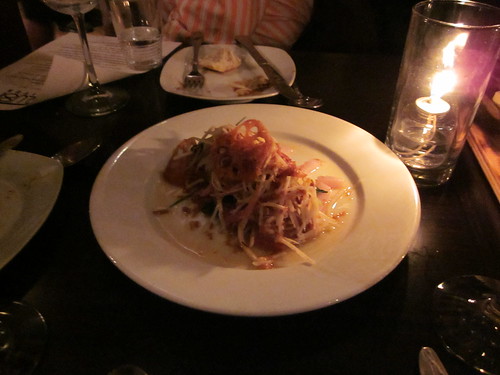
Today everything is coming up mackerel: classic or contemporary. Should the trend continue, jack mackerel will perhaps be soon as endangered as Chilean seabass. This oily fish, once rarely seen at top tables, now shows up in the best society. Marinated Mackerel, Leche Del Tigre (a citrus-based marinate), Baby Leeks, and Verdolagas Leaves (aka purslane) constituted Ludo’s paean to ceviche. While the dish revealed well-chosen ingredients and was successful as an aquatic appetizer, the flavors or textures have slid from memory.
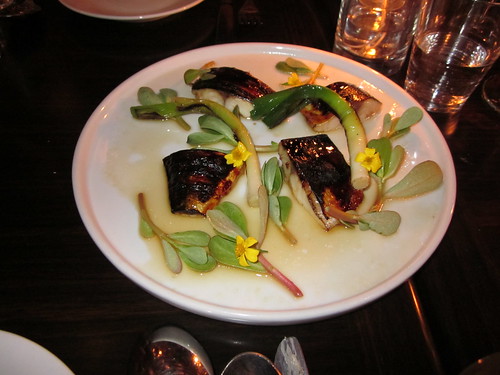
Salmon “a l’huile”, Somen Noodles, Carrots, Red Wine Vinaigrette, and Grilled Salmon Roe was my least favorite plate of our night. This was ultimately a straight-up seafooder. With the exception of the creative escargot dish, the other courses to this point were presented within well-trod traditions. I do not complain about the quality of the ingredients, but I was surprised at the lack of buzz.
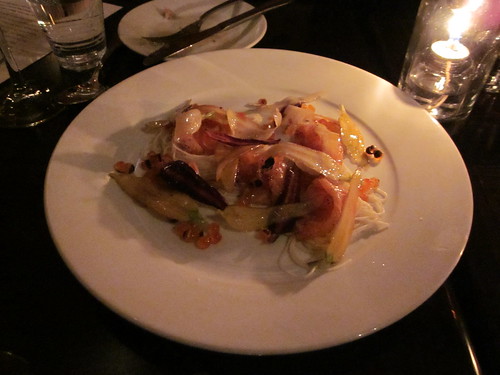
Although White Rice Veloute, Poached Egg, Spinach, and Christmas Oil does not either read or look like a dish that one might expect a celebrity chef to prepare, the dish in its hidden and unsuspected way proved to be delicious: three-star comfort food. Perhaps the Christmas (conifer) oil might have been more dramatic, the dish worked nicely.
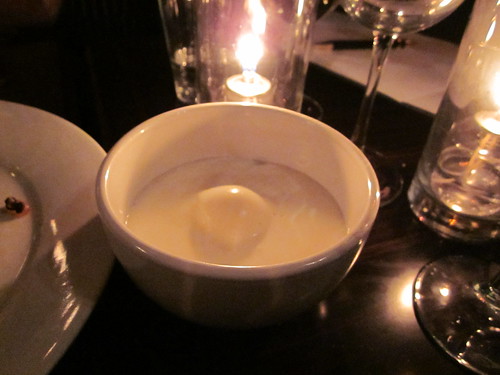
Impressive, too, was Chef Ludo’s Boudin Noir “Parmentier”, Apples, Mustard Tapioca, looking for all the world like an Asian roll that might have emerged from one of David Chang’s kitchens. Parmentier indicates that the dish ennobles the potato and its promoter, but the apples and mustard tapioca provided the necessary kick for what would otherwise have been sausage and mash.
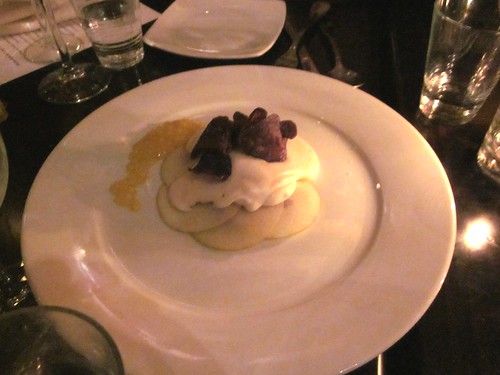
A quick glimpse of Beef Tartar, Celery Root Remoulade, Red Port, and Foie Gras Powder suggests that an explosion must have occurred in the kitchen, splattering the good china. As such, this was the most revealing dish of the evening. The precision that one might have expected was knocked aside in a riot of carnal taste. As an abattoir of flavor, the dish succeeded with the port and foie gras providing the savory core, but as a plate, tonight Chef Ludo was less Rodin than Jackson Pollock.
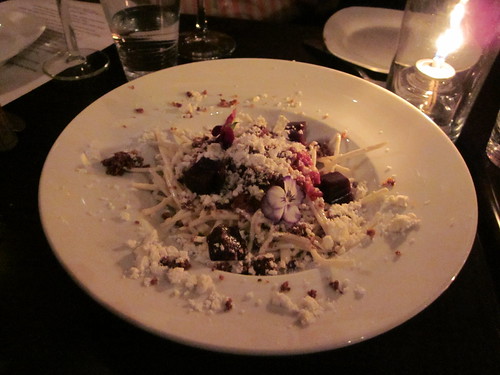
Foie gras continued into the next dish, which was one of the most compelling of the evening: Roasted Pickled Foie Gras, Honey, Autumn Fruits (Pear and Pickled Ginger), and Rose Flowers. Although my taste for Foie Gras has waned as its celebrity expanded, the rose flower compote made this dish a memory of summer, a moment of desire.
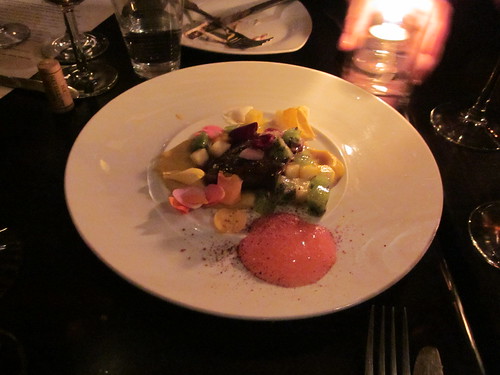
In contrast Cod, Smoked Potato, Bell Pepper, Pil-Pil Sauce, and Amaranth lacked drama. For me the thinly sliced and crispy smoked potatoes were the high point of a dish that seemed fundamentally pedestrian.
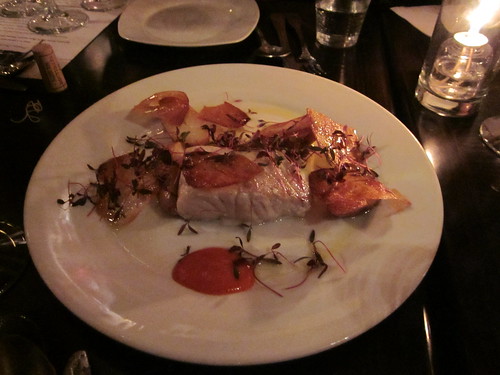
Even fine chefs are prone to stumble when confronted with hunks of protein. Perhaps because of their more compact form, appetizers are often more successful than the main course. Main courses often are variations on the tried and true without a novel conception. Fortunately this was not true of the two main courses prepared by chef Ludo. Maybe these dishes required less technique, but they both were exceptionally creative: brilliant and challenging combinations.
The Braised Veal, Leek Salad, Button Mushrooms, Fresh Black Truffle, Green Onion-Garlic Parmesan Bubbles was the most explicitly molecular of the dishes on the menu. One might imagine that Green Onion-Garlic Parmesan Bubbles would not be an ideal match for braised veal, but in fact the match was joyous. The combination of textures and tastes, although surprising, were celebratory. Hypermodern cuisine has the potential to enter the history books in the right hands.
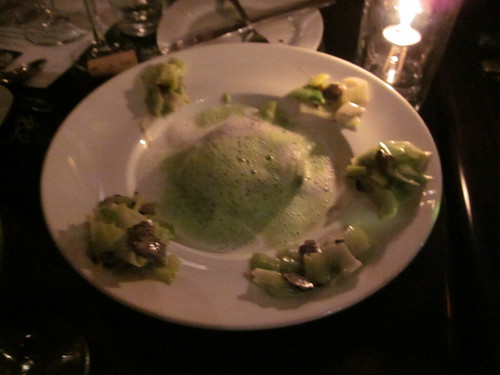
Better still was Chef Ludo’s paean to Korea: Marinated Korean Steak, Crispy Kimchi, Radish, Bone Marrow, and Shiso. Tonight the chef was working with Asian ideas, and the creativity of Crispy Kimchi was marvelously provocative and managed to bring the dish together in gustatory common cause.
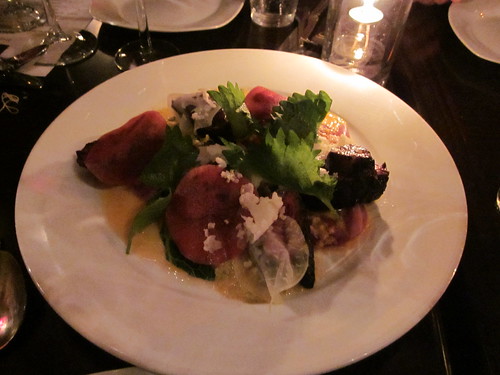
I was disappointed by the Cantal Cheese Mikado, White Chocolate, Candied Black Olive, another explosive presentation, but one in which the cheese and white chocolate mirrored each other visually, but did not contribute to a greater insight into either.
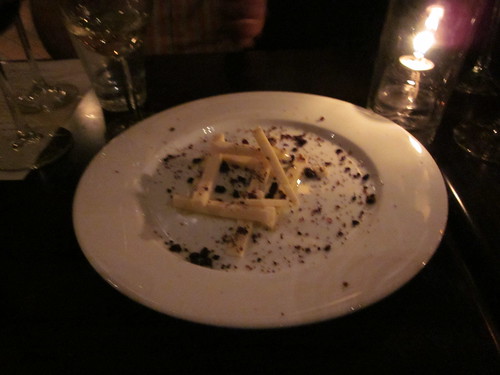
Surely the grandest creation of the evening was Chef Ludo’s Crème Fraiche Panna Cotta, Caramel Sauce, and Caviar, a bravura dish that several at the table found reminiscent of his work at Bastide. Here were textures and flavors that did illuminate each other: sweet, salty, sticky, and smooth. It was an electric presentation. Let us have caviar for dessert each and every evening for eternity.
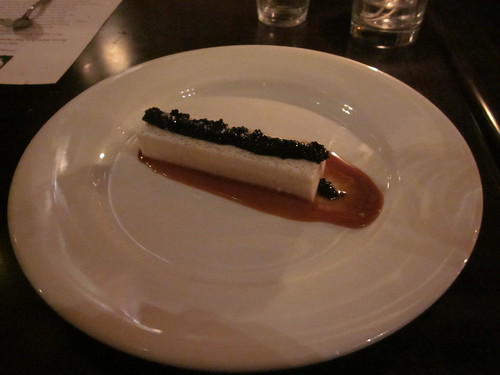
Finally we were served a very hospitable Warm Carrot Cake, Coconut, Thai Curry, Mango Sorbet, with Kaffir Lime Oil. This was another Asian melody: one in which curry proved that when well-handled be a source of dessert pleasure.
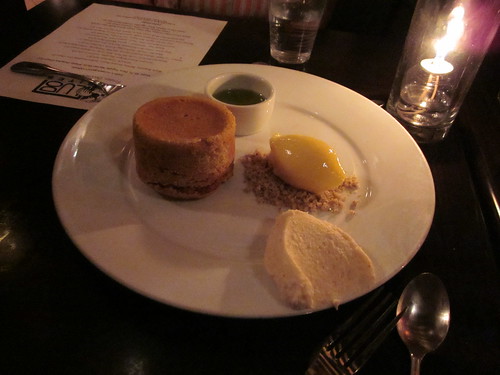
Given my recent experiences with San Francisco restaurants, I found that Ludobites 6.0 was less vegetable-centric than I expected: this was a protein-based cuisine. The evening was none the worse for that, but less about the chef as gardener-in-chief.
One of the advantages to running a pop-up restaurant is a lack of commitment to a flavor profile. And so Ludobites 7.0 might be an occasion for a new invention of self for Chef Lefebvre.
Ludobites 6.0 (now closed)
(at Max’s)
13355 Ventura Boulevard
Sherman Oaks, CA
http://www.ludolefebvre.com/ludobites/max
